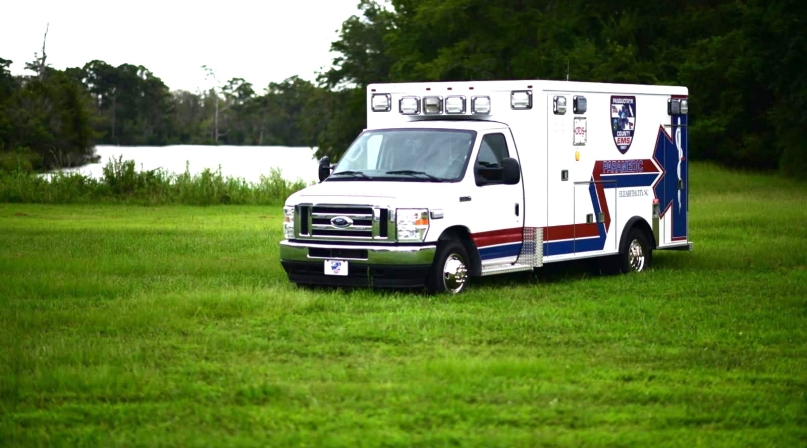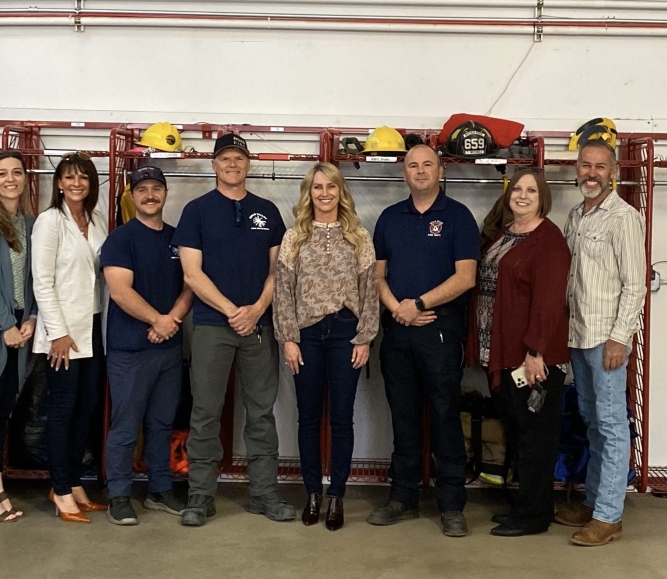Nuanced EMS response addresses paramedic shortage

Key Takeaways
Facing a shortage of paramedics, Pasquotank County, N.C. created an Emergency Management Services (EMS) Tiered Response Program to put its emergency responders to better use.
Before creating the tiered approach, Pasquotank County emergency management sent out a paramedic to respond to every emergency, whether or not paramedic services were actually needed, according to Jerry Newell, chief of Pasquotank County EMS.
“It didn’t matter what the level of call was,” Newell said. “If it was a cut finger, you got a paramedic. If it was a cardiac arrest, you got a paramedic.
“So, what we did was sit back when these paramedics started to drop out in our system and other systems too, to look and see how we could save the paramedic for when a paramedic is needed, just to use that resource better.”
At its highest point, Pasquotank County EMS faced a 9% staff shortage. Because a paramedic was assigned to every ambulance, they were not being used as effectively as they could be, Newell said.
With the tiered response program, which only assigns paramedics to Quick Response Vehicles (QRVs), paramedics are freed up to assist in more dire emergencies, so that each emergency response can provide appropriate care, he added.
“If we have a blood sugar [problem], which is handled by a lower level, or we have a sprained ankle which can be handled by a basic life support truck, we keep our paramedics free to be able to respond in numbers to the high acuity calls,” Newell said.
“Now, we can have two or three paramedics on the scene of a cardiac arrest who are helping with a pit crew type of approach, meaning everybody can be assigned a task which is appropriate for their level.
“And then everybody can work together in concert to make that cardiac arrest have the best outcome.”
Emergency Management dispatchers categorize call acuity, sending Quick Response Vehicles when an emergency requires paramedic intervention and/or additional EMS assistance. After implementing the tiered response model, Pasquotank County’s need for paramedics on primary response ambulances on each shift was reduced by 50% and its vacancy rate fell to 0%, which it maintains today, according to county data.
A Quick Response Vehicle was recently dispatched when a woman in the county was experiencing anaphylactic shock.
Five years ago, only one paramedic and one basic level technician would have been on the scene, but because of the county’s tiered response program, two additional paramedics were able to come to the scene, according to Newell.
“We treated the acute condition, got her turned around, and it was just a very successful outcome,” Newell said.
“Not to say that it wouldn’t have been otherwise, but it was treated more efficiently, it was treated quicker, and it was treated appropriately.”
Pasquotank County currently has five Quick Response Vehicles on duty during peak times.
Ahead of the program’s launch in 2022, EMS was able to purchase a new vehicle through the county budget.
The tiered response model could be adapted by counties across the country, but for it to work, everyone needs to be on board — both in emergency response and in county government, Newell said.
As a result of the program, Pasquotank County emergency medical technicians were re-trained, to ensure that they’re ready to operate at a credentialed level without a paramedic onboard. Retraining will occur at least once a year moving forward, according to Newell.
“Everybody in the whole chain of command has to be willing to participate in this,” Newell said. “And if your deputy chiefs and assistant chiefs and regular chiefs are not ones who want to get out and run in the street, this is not going to work for you — everybody’s got to participate … so, take it to your teams early and be honest and forthright with your crews.”
Related News

Senate passes Second Chance Act reauthorization
On May 22, the Second Chance Reauthorization Act of 2025 (H.R. 3552/S.1843) was introduced in the U.S. Senate and the U.S. House of Representatives with robust bipartisan support. NACo supports this legislation, which would reauthorize funding for Second Chance Act (P.L. 110-199) programs through 2030.

FEMA delays $11 billion in state disaster reimbursements
The Federal Emergency Management Agency (FEMA) recently withheld roughly $11 billion in planned disaster reimbursements to 45 states, shifting the payments to fiscal year 2026 and marking a major change in how the federal government is managing disaster relief funding.

New approach transforms youth justice in Pierce County
Since 2000, Pierce County, Wash. has achieved an 88% reduction in youth detention — even as the county’s overall population has grown by approximately 30% over the same period.
County News
Utah Association of Counties takes on health benefits for EMTs
A program championed and managed by the state association will help rural counties attract and retain crucial volunteers for emergency responders.

